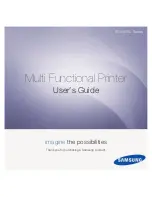
Version 3
imagePRESS 1110+ Customer Expectations Document
Page 6
2.1 Summary of Functions
Function
imagePRESS 1110+
Output Speed (B&W)
110 ppm (LTR)
Engine Resolution
1,200 x 1,200 dpi
Gradations
256 levels
Scan Speed
(LTR, 300 dpi)
Simplex
B&W: 120 ipm (images per minute)
Color: 80 ipm
Duplex
B&W: 200 ipm
Color: 80 ipm
Paper Size
Minimum
7.17” x 7.17”
Maximum
13” x 19.2”
Paper Weight
Plain
14 lb bond to 110 lb cover (52 to 300 g/m²)
Coated
24 lb bond to 90 lb cover (80 to 240 g/m²)
HDD Capacity
80 GB
Printer Memory
Main Controller 1:
1 GB Maximum
(512 MB Standard, 512 MB Optional)
Main Controller 2:
1 GB Maximum
(512 MB Standard, 512 MB Optional)
Maximum Imageable Area
12.3” x 18.7” (313 mm x 476.1 mm)
Copy
Optional (w/Reader and Feeder)
Mail Box
Yes
Network
Yes
Remote UI
Yes
MEAP Capability
Yes
Controllers
imagePRESS Server K200
imagePRESS Server K100
imagePRESS Printer Kit-A1
Network Scanning
Optional (w/Reader and Feeder)
Send
Optional (Universal Send)
2.2 Offset Press vs. Digital imagePRESS
Offset printing
is a technique that transfers (or “offsets”) an inked image from a
plate to a rubber blanket, and then to the printing surface. This enables the offset
press to maintain a consistent and high image quality over long print runs because
the plate never touches the paper. The process requires a substantial investment
in equipment and setup expense to achieve these results.
A
digital press
uses an electrostatic process to produce “offset-like” image quality
at a fraction of the cost of an offset press. In the imagePRESS 1110+ digital press,
the drum is imaged; the toner is applied, and then transferred to the ITB
(Intermediate Transfer Belt). The ITB then transfers the toner to the paper in one
single pass. The small toner particle size provides high print quality with crisp thin
lines, high quality characters, smooth corners, and clean gradient transitions,
closer to that of an offset press.







































